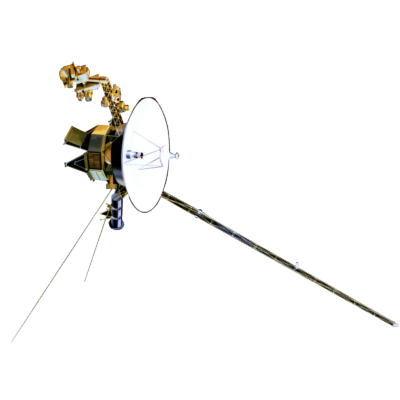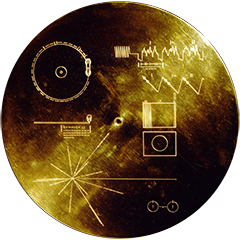Voyager LECP Data Analysis Handbook
Ground Processing of Voyager Data
IP address for the Fundamental Technologies VAX computer KULECP: 192.168.33.38
User logon:
Password:
| Command | Explanation/Comments |
| $lecpprod | Gives access to the directory containing the BigRun program. |
| $set def
KULECP$DKB500:[voyager.v105.new_files] or $set def KULECP$DKB500:[voyager.v205.newfiles] |
Gives access to most
recent Voyager 1 data downloaded. or Gives access to most recent Voyager 2 data downloaded. Look to see the date of the most recent file. New data will be collected through FTP. |
| $FTP | FTP activates the FTP ability of the vaxes. |
| FTP>hurlbut.jhuapl.edu | Hurlbut is the name of the APL computer from which we get the data; this command tells the FT vax computer where to connect. |
|
HURLBUT.JHUAPL.EDU> login |
Password is your email address. |
|
HURLBUT.JHUAPL.EDU> cd pub |
Hurlbut is a unix machine, so while we are on this system all commands will be unix commands. |
|
HURLBUT.JHUAPL.EDU> binary |
All
files will be in binary format; the system must be
told so the files are downloaded properly. |
| HURLBUT.JHUAPL.EDU> mget | File name or partial file name using wildcards for the rest. For example, VR1052**.Zip will retrieve all Voyager 1 files from the 200th day of the year to the 299th day of the year. |
| HURLBUT.JHUAPL.EDU> exit | Exit from the APL unix machine once all files needed have been transferred. |
| $edit/edt un.com | The file un.com contains a list of commands that will unzip multiple files at once. To change what files are being unzipped edit un.com. |
|
*ch |
ch changes the editor so you can edit multiple lines at once. |
| $unzip
filename1.zip;# $unzip filename2.zip;# etc. |
For each file that you wish to unzip
put in the following: $unzip filename.zip;# where filename is the name of the file and # is the version number. |
| ctrl z will bring you out of the multiple line edit mode. | |
| *exit | Exit will save any changes and leave the edit mode (use quit to exit without saving). |
| $@un | @un runs all the commands within the file un.com. |
| The files are at this point all data on a single line with no carriage returns. To be able to use these files, the attributes, record format and logical record length must be changed. | |
| $edit/edt chfat.com | Chfat.com contains commands to change multiple file attributes at once. |
| *ch | |
|
$set file attributes=(rfm:var,
lrl=968) filename1.mrt;# |
For each file that you unzipped you now want to set the commands to change their attributes. |
| *exit | |
| $@chfat | All files are now in the correct format and ready to have BFH run upon them. |
|
$set host KUSPA1 |
This provides access to another computer with an older operating system which is necessary for BFH to run. |
| Username: Password: |
You can use the same username and password that you used originally. |
|
$set def KULECP$DKB500:[voyager.v105.New_files] |
Sets the new computer into the directory containing the files that were just set up for it. |
| $run BFH | BFH stands for Binary File Handler. |
|
BFH> open file1.mrt; |
File1 is the first file you wish to work on. Each
file must be done individually. BFH is designed to help get rid of the junk before and after the actual good data. This requires more user input than any other part of the process. |
| BFH> look file1.mrt; 20 |
We are telling the program to show
the first 20 lines of the file. In actuality,
though, this can be any number and you may need to
change the number to find the best data. Look over the data that is shown to find the first good series of time. |
|
|
|
|
BFH> Map file1.mrt Option: v Option: |
The map function will run the entire
file. Option v means verbose, thus showing each
line as it is read. There is no necessary second
option. User must scroll up to examine the last bits of data. |
 In this case the last line of good data is line 1739. User makes note of this. |
|
| BFH>Rewind Filename: file1.mrt |
Rewind sets the file back to the beginning. |
| BFH>open newfile.mrt | In this instance you are creating a new file, where the good data will be placed. The file name is the same name as the file already open, just remove the r, so you have: V#YYDOY.MRT, where # is 1 or 2 depending on which satellite you are dealing with. |
|
BFH> copy file1.mrt newfile.mrt Outfile start {<CR>, T, F=, R=}: Infile start {<CR>, T, F=, R=}: R = # Infile stop {<CR>, EOF, EOT, . . . }: R= # Monitor copy process? Y (Yes) or N (No): Y |
...where # is the first good starting number; in our example it would be 4. ...where # is the number of the last line of good data. In this example it would be 1739. At this point the program will copy all of the data between those two lines into the new file. This process will have to be run on each file that was unzipped. |
| BFH>exit | Exits BFH |
|
For Voyager 1: |
|
|
$assign kulecp$dkb500:[voyager.v105] vger$in $assign kulecp$dkb500:[voyager.v105] vger$out |
Sets kulecp$dkb500:[voyager.v105] as
the directory holding the source files. Sets kulecp$dkb500:[voyager.v105] as the directory to place the finished files. |
|
For Voyager 2: |
|
|
$assign kulecp$dkb500:[voyager.v205] vger$in $assign kulecp$dkb500:[voyager.v205] vger$out |
Sets kulecp$dkb500:[voyager.v205] as
the directory holding the source files. Sets kulecp$dkb500:[voyager.v205] as the directory to place the finished files |
|
@big_run |
This runs the data and returns filtered data. We use this primarily for research purposes. |
|
@big_run_nf |
This runs the data and returns unfiltered data. This is useful to track down problems in the data itself or in the satellite. |
|
All csv files are put into a directory that is set automatically at login, called VGER$LIST. Auxiliary files are sent to a directory called VGER$MAP, also set at login. These are set by the file login.com, which can be changed although it is best to leave it be. |
|
| $set def kulecp$dkb500:[voyager.v105] | This drive has some command files which should be used to transfer the files that have been produced from the vaxes and to \\black\from_vaxes\voyager. From here the files can be moved to the archives. |
| $edit/edt fat_send.com | |
| *ch | When editing these command files, change only the names of the files are being sent. |
|
$SET VERIFY |
So for this file, only the files listed after “send” should be changed, maintaining the current structure of the files. Be sure only to list files with the .fat extension. |
| *exit | Ctrl + z gets you out of multiple line edit mode. |
|
$@ fat_send |
At this point all the files with the .fat extension have been sent. Move on to the next file. |
| $edit/edt lnx_send | Change the files after the “send” so that they are the files that have been produced; only files ending in the lnx extension should be listed. |
| $@lnx_send | |
|
$edit/edt mrt_send |
Change the files after the “send” so that they are the files that have been produced; only files ending in the .mrt extension should be listed. |
|
$@mrt_send |
|
|
$edit/edt scn_send |
Change the files after the “send” so that they are the files that have been produced; only files ending in the .scn extension should be listed |
|
@scn_send |
At this point you are done with the vaxes. The files can be found at \\black\from_vaxes\voyager. Simply go to this location and move the files to the archives in the appropriate folders. |
Return to Voyager
LECP Data Analysis Handbook Table of Contents.
Return to Fundamental
Technologies Home Page.
Updated 8/9/19, Cameron Crane
VOYAGER 1 ELAPSED TIME
*Since official launch
September 5, 1977, 12:56:00:00 UTC
VOYAGER 2 ELAPSED TIME
*Since official launch
August 20, 1977, 14:29:00:00 UTC
QUICK FACTS
Mission Duration: 40+ years have elapsed for both Voyager 1 and Voyager 2 (both are ongoing).
Destination: Their original destinations were Saturn and Jupiter. Their current destination is interstellar space.




